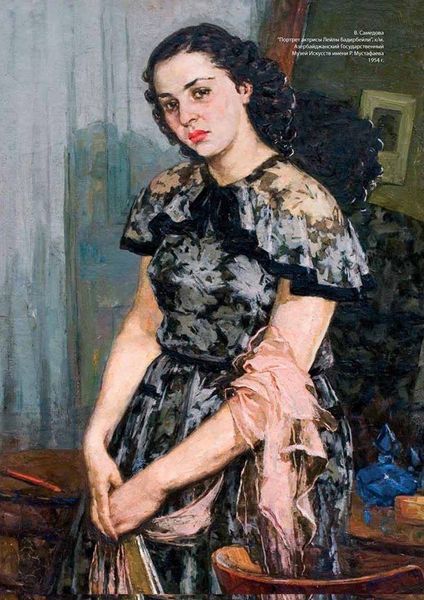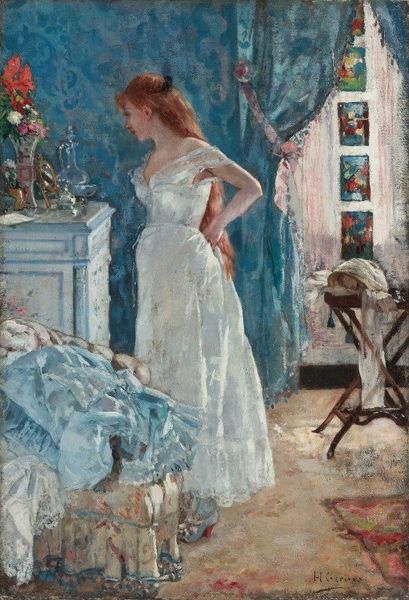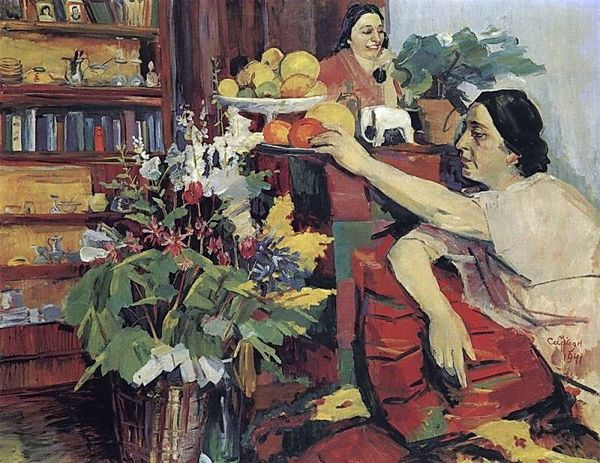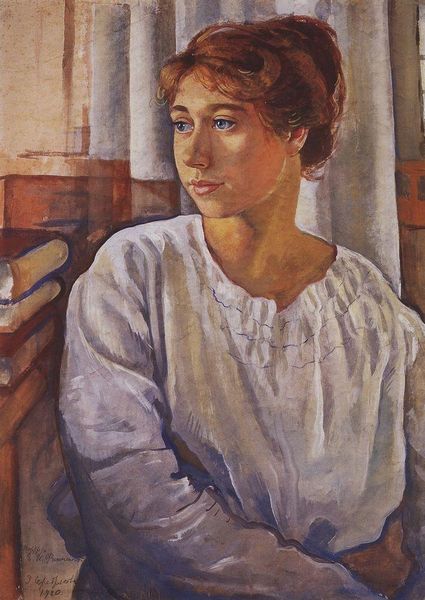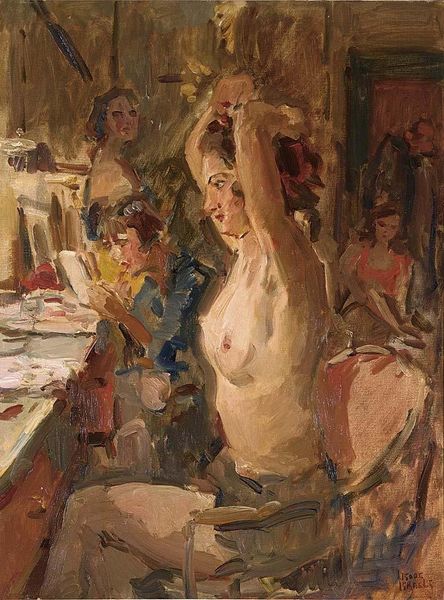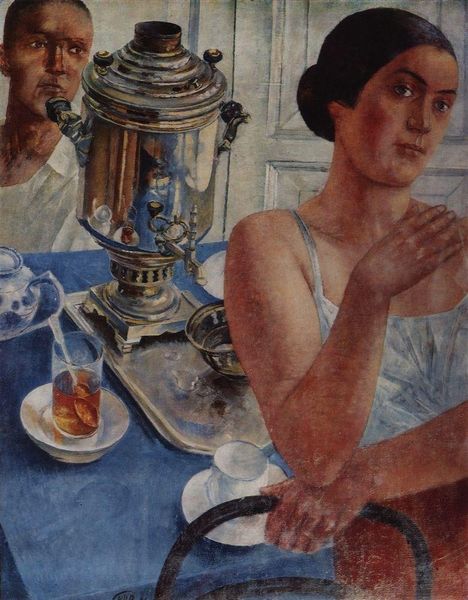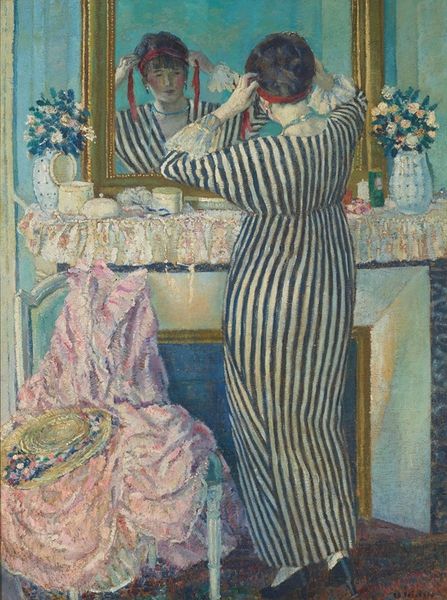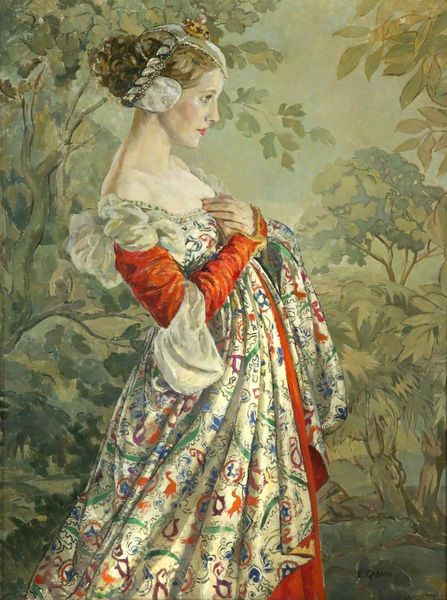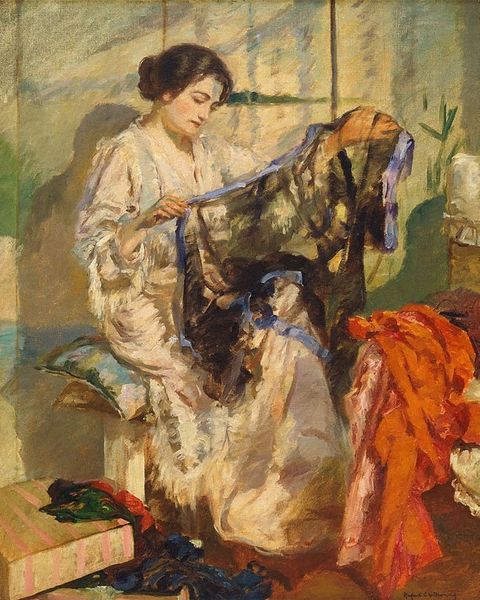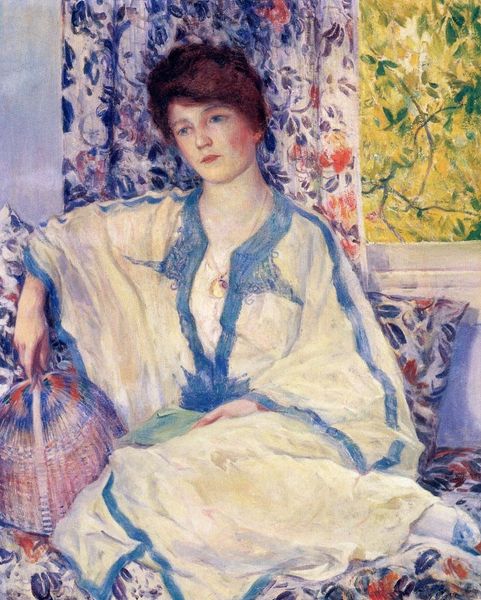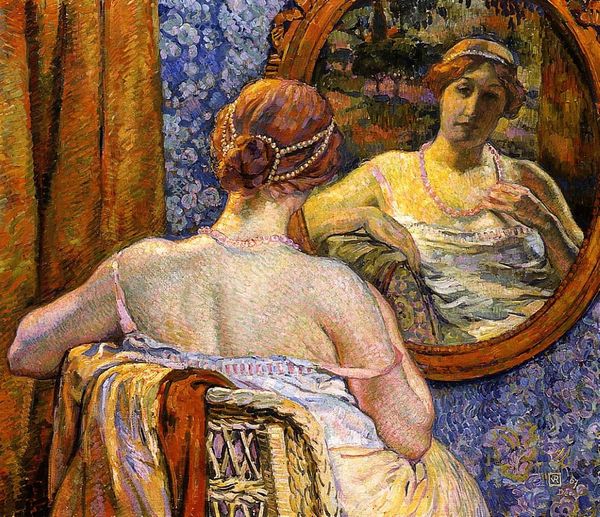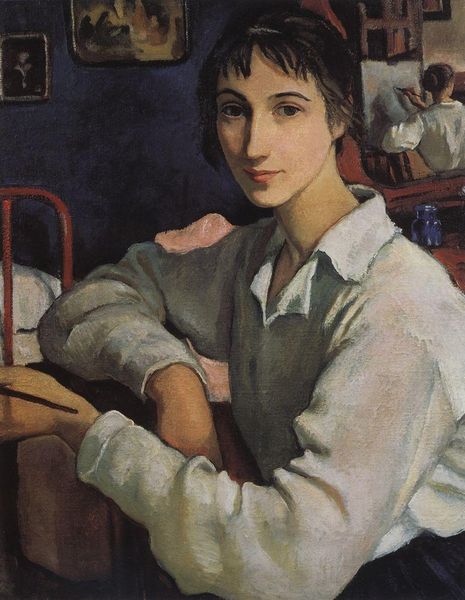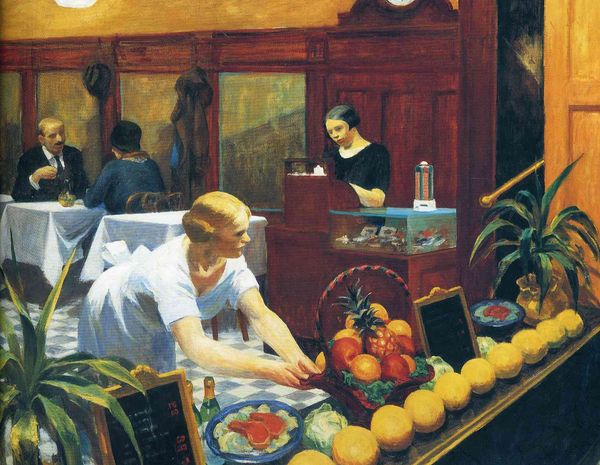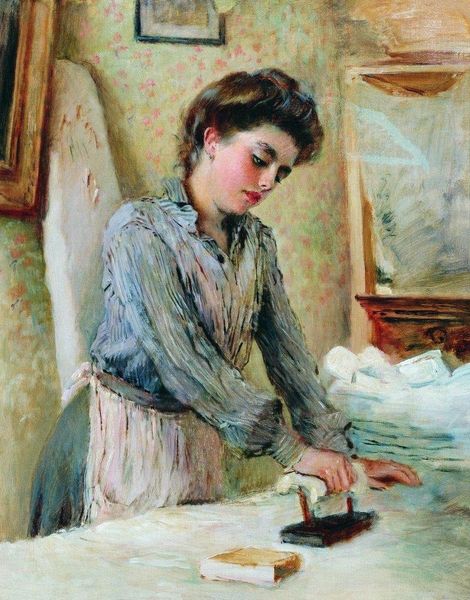
Copyright: Public domain US
Curator: This is "At the Dressing Table," a self-portrait painted in 1909 by Zinaida Serebriakova. It currently resides in the Tretyakov Gallery in Moscow. Editor: There's an immediate sense of intimacy, isn’t there? She seems caught between the mundane act of getting ready and projecting this gaze that pulls you right in. It feels incredibly candid, almost voyeuristic, even though she’s presenting herself. Curator: Indeed. It’s quite different from typical formal portraits. Consider the socio-political context: the early 20th century in Russia, a time of both great upheaval and artistic flourishing. Serebriakova’s family was deeply entrenched in the artistic and intellectual circles of the time. Editor: So, this intimacy...it's a conscious choice, a rejection perhaps of the rigid expectations for female artists, specifically, maybe of that era. I’m interested in how her matter-of-fact gaze intersects with what would've been constraints in exhibiting the domestic sphere, or intimism, which can have political undertones in asserting her agency and identity. Curator: Exactly. Think about the burgeoning feminist movements. While not overtly political, the painting subtly challenges traditional gender roles by portraying a woman in control of her own image and presentation. Her expression, her gaze challenges us, particularly as she exists outside the dominant male gaze that dictated artistic representations of women. The surrounding details of everyday objects scattered around further emphasize this intimacy. Editor: The objects, you're right. The cosmetics, the pearls, scattered needles... They could become performative objects that hint towards identity and class—even within the construct of the painter capturing herself. What is being omitted to make that image complete, or considered a whole? The sparseness suggests she's making an intentional point with that captured mundanity. Curator: Precisely. Also note the use of light. She uses light and shadow to emphasize certain areas such as her face or wrist bracelet to subtly draw the eye towards those focus areas to hint and tease with both the domestic or performed ideas, Editor: It speaks volumes about her experience of the self and, potentially, the wider experiences of women artists navigating the constraints of their time. Thank you for pointing this artwork out to me and contextualizing how women negotiated identity representation through portraiture at that moment. Curator: My pleasure. Thinking about this piece offers valuable perspectives into how female artists navigated personal expression while challenging societal norms of representation at the turn of the century.
Comments
No comments
Be the first to comment and join the conversation on the ultimate creative platform.
